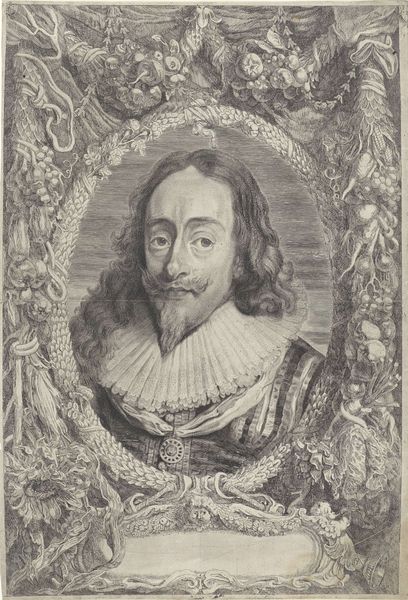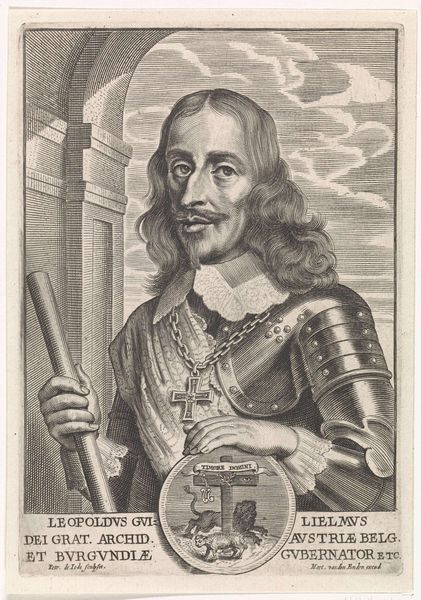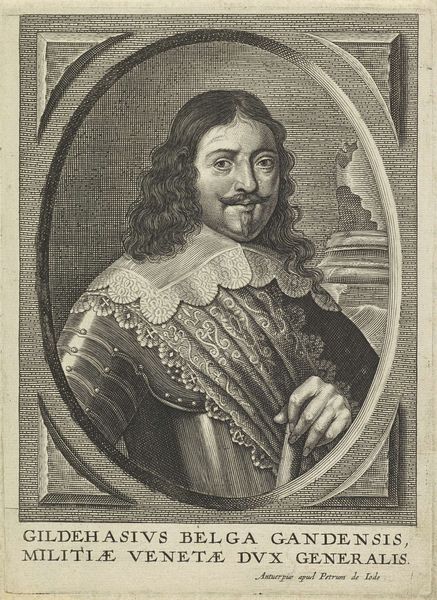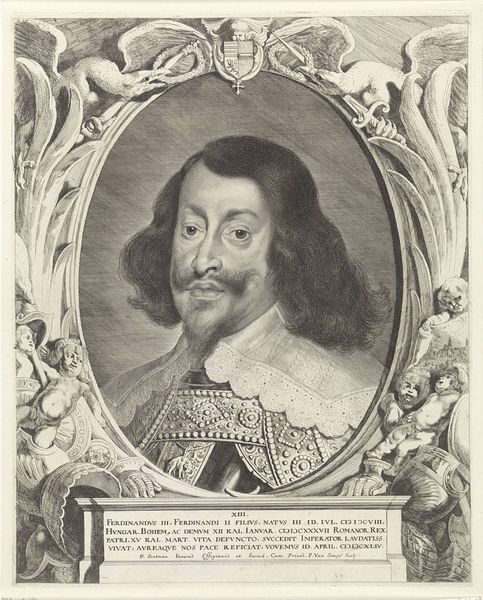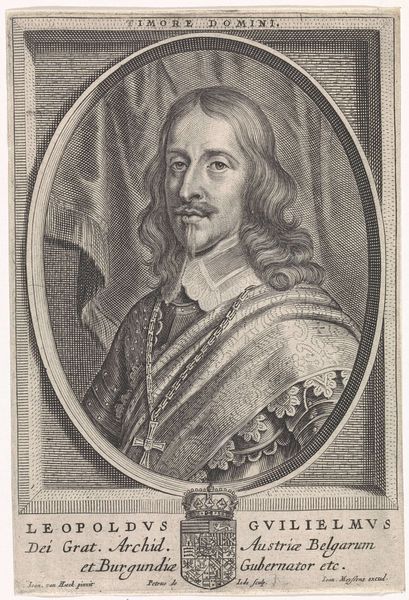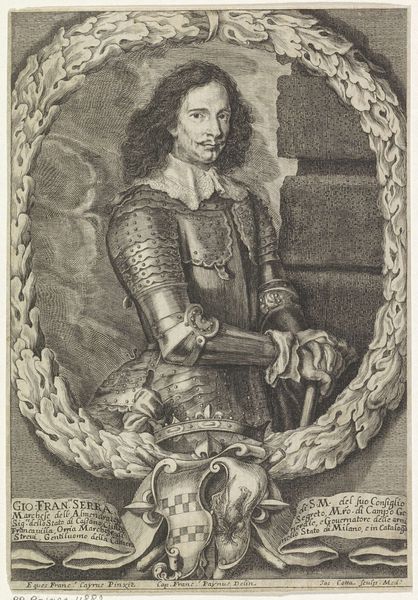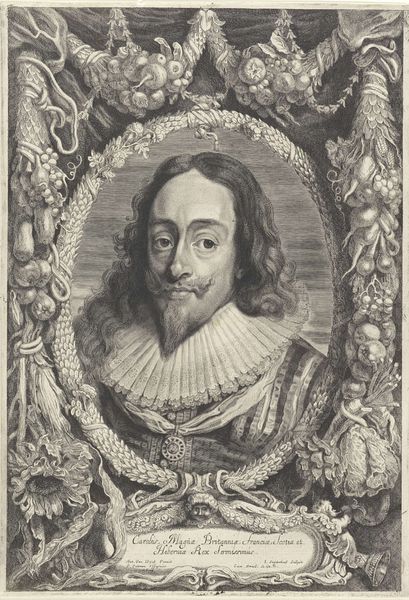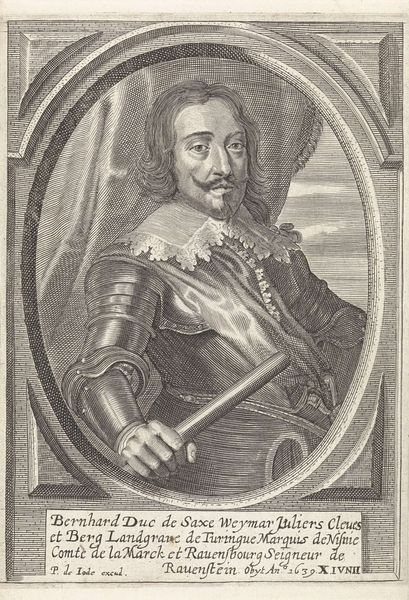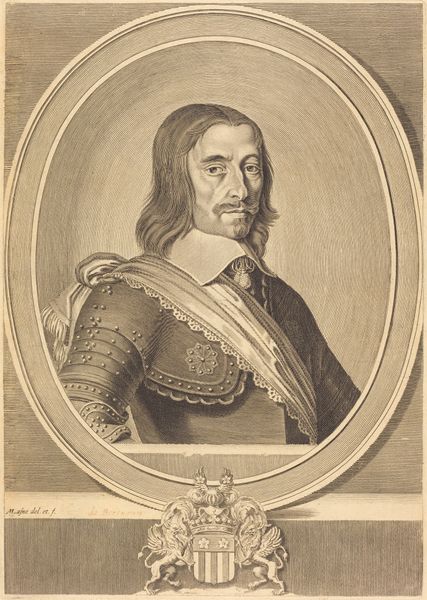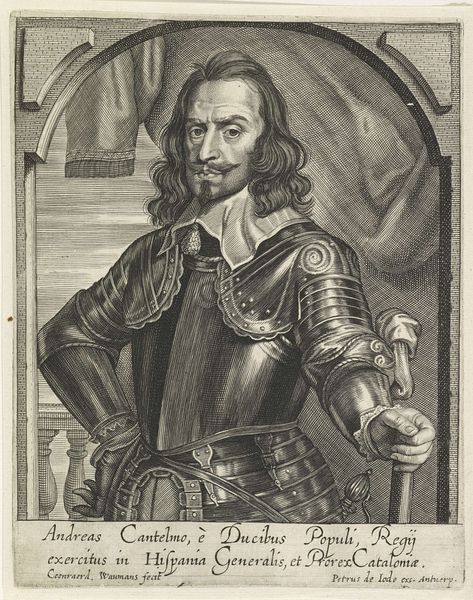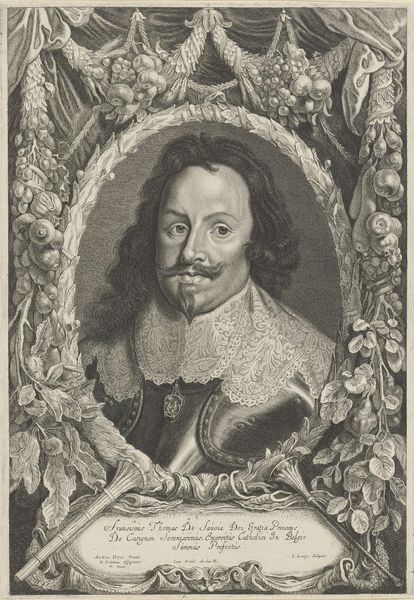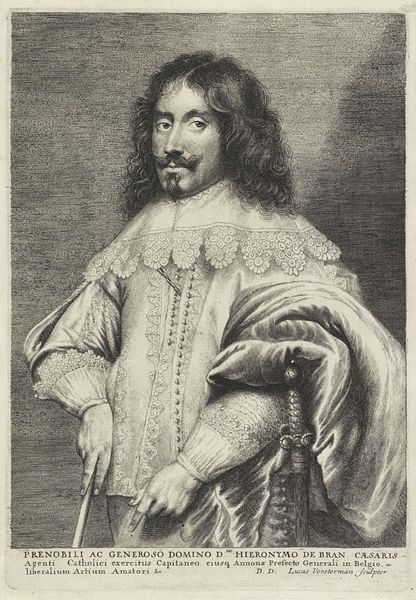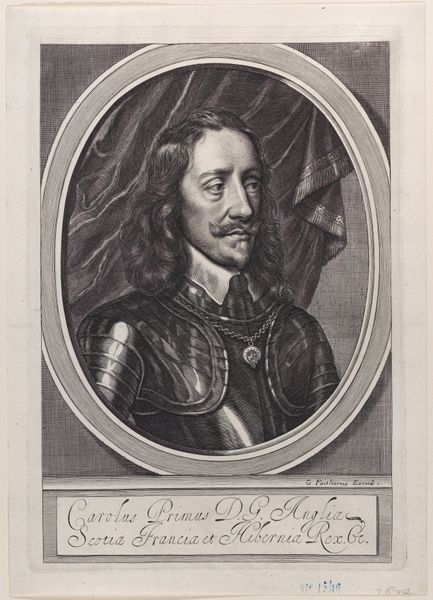
print, engraving
#
portrait
#
baroque
# print
#
old engraving style
#
portrait reference
#
history-painting
#
engraving
Dimensions: height 239 mm, width 185 mm
Copyright: Rijks Museum: Open Domain
Editor: Here we have a portrait of King Charles I of England, made between 1640 and 1670 by Joannes Meyssens. It's a print, an engraving actually. There’s such a formality to it, so rigid and stately. How do you interpret this work, considering the context of its creation? Curator: Well, the context is key. Charles I was a figure of intense political division, right? This portrait, likely created during or shortly after his reign, functions as a very specific kind of propaganda. We see him in armour, next to the crown. What does that convey to you about the intended message? Editor: Strength, power, legitimacy... that he was a rightful ruler, divinely appointed. But, wasn’t he executed? Curator: Precisely. So this image participates in constructing a particular narrative about Charles, even as his actual power crumbled and he ultimately lost his life. This idealized representation obscures the turmoil and the very real challenges to his authority. Think about who this image would have been circulating amongst, and what social class they likely occupied. It’s an appeal to royalist sentiment, a way to maintain an image of kingship even in the face of profound social and political upheaval. How does this portrait resonate, knowing it was made during a period of great upheaval and civil war? Editor: It’s a fascinating contradiction. The image is trying to project unshakable authority at a time when that authority was anything but unshakable. A carefully constructed illusion! Curator: Exactly. It reminds us that portraits, particularly of powerful figures, are never neutral. They are always active participants in shaping perceptions and reinforcing power structures. Editor: It definitely provides a deeper insight when you look at it through the lens of social and political messaging! Curator: Absolutely! Recognizing those undercurrents is vital to truly understanding the piece and its impact, then and now.
Comments
No comments
Be the first to comment and join the conversation on the ultimate creative platform.
